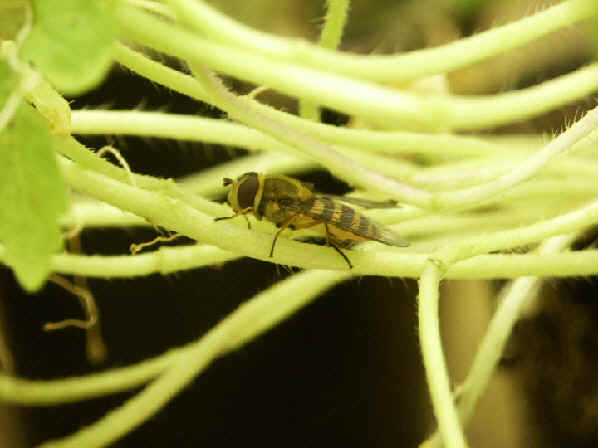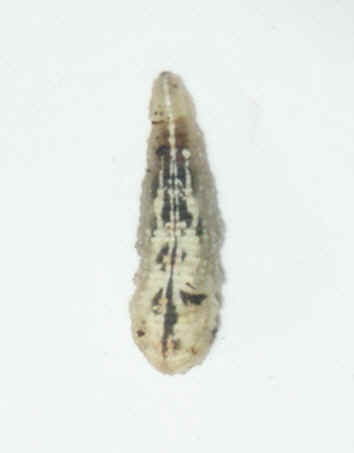Home Research Group Members Publications Collaborators Contact
Cold tolerance in hoverflies
Philip Mason

While reading biology here at Birmingham, and specialising in environmental biology, I became interested in the ecology and physiology of insects, and carried out a project investigating the effect of dietary nitrogen levels on the cold hardiness of bird cherry-oat aphid Rhopalosiphum padi. I returned in 2002 to continue cold-tolerance work for a PhD, this time working with the hoverflies Syrphus ribesii and Episyrphus balteatus.
Current Research
Work so far has focused on S. ribesii, one the most common hoverflies in the UK. The larvae of this species are aphidophagous, and are thus recognised as important natural enemies of agricultural and horticultural pest aphids.

Adult Syrphus ribesii
In the UK, S. ribesii overwinters in the larval stage, commonly in the leaf litter at the soil surface. In order to survive sub-zero temperatures, the larva is able to withstand the formation of extracellular ice. This species is the first UK insect to have been identified as being strongly freeze tolerant. However, the precise nature and mechanism of this process, and the implications of it for this insect's life history, are poorly understood.

Syrphus ribesii larva (3rd instar) - approx 3x life size
This project is funded by NERC.
External links: Register of Syrphid Workers Syrphidae Mailing List European Syrphidae Database
Home Research Group Members Publications Collaborators Contact
Last Updated: February 2006
Web designers: Ian Hatherly,
i.s.hatherly@bham.ac.uk and Philip Mason, pxm889@bham.ac.uk
© copyright 2006 University of Birmingham